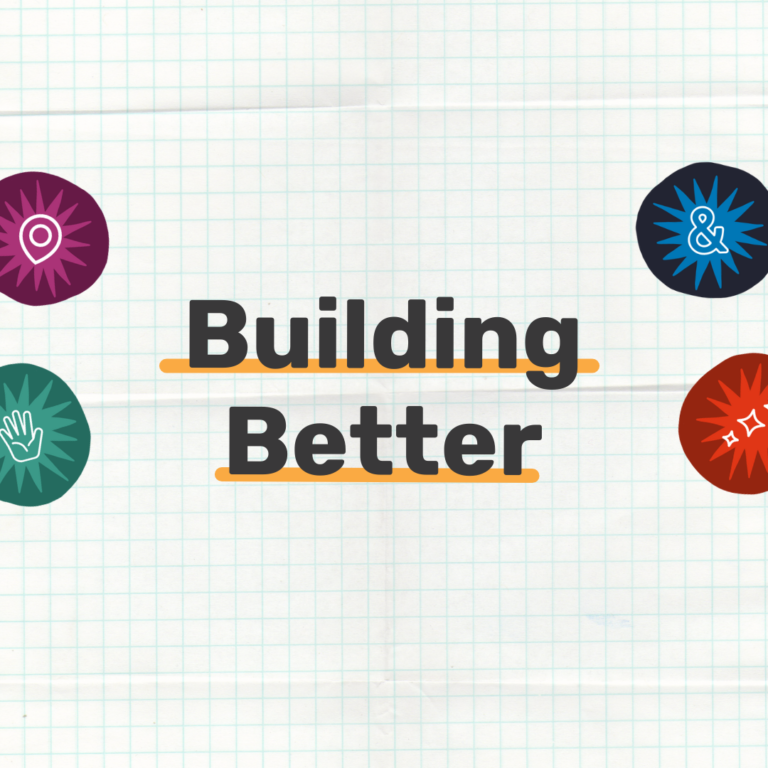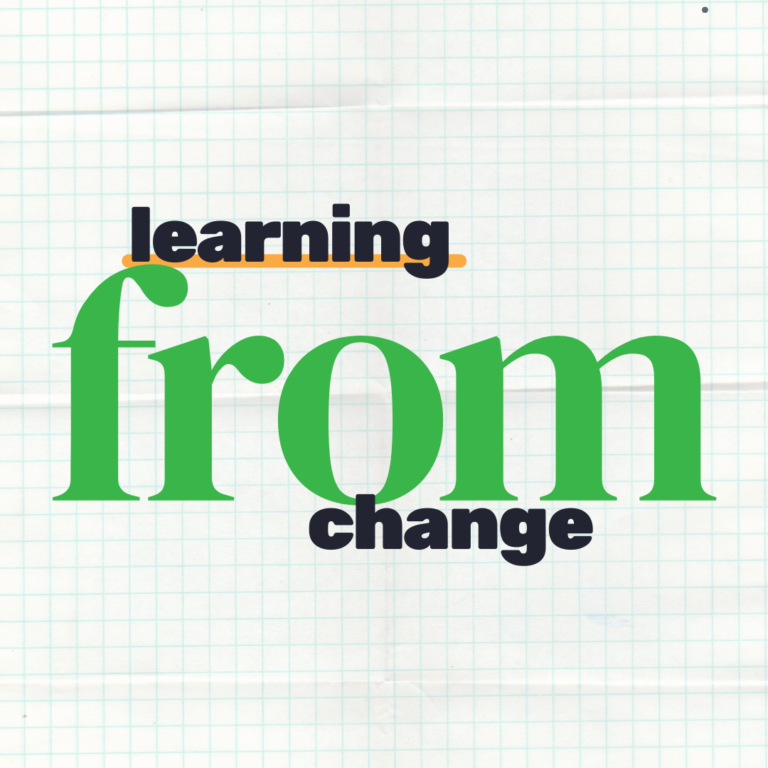Various perspectives on what clear learning experiences are like.
Overview
31 March 2023 | 15 min and 54s
What does “clear,” or “malinaw,” mean to you?
For the first episode of Habi Hour Season 4, we discuss our first design principle, “malinaw,” or clear. We also share some examples of learning experiences designed with clarity in mind and its impact on both the learner and the learning experience designer.
Transcript
Gerson: Have you ever been lost? In a different city or country, or even an office building that you’ve never been to before? We rely a lot on signs and signals to tell us where to go and what to do next. And without them, it’s easy to feel scared or frustrated. Hindi maganda ang pakiramdam pag feeling mo na lost ka. Maraming learners, ganyan ang nararamdaman bawat araw, lalo na nung nag-transition into remote learning. Lost sa content, lost sa LMS, lost sa lesson. Malamang may halong takot at inis rin sila. That’s why clarity is so important in any learning experience.
[Light music]
Celina: For me, pagiging malinaw kasi– I really see it as prerequisite to any effective learning experience or lesson. Kaya na nilang mag-execute on their own. They know where to find resources. They know how to navigate the classroom, whether it’s online or in a physical classroom.
[Habi Intro]
Gerson: Welcome to Habi Hour. I’m Gerson,
Kaye: And I’m Kaye
Gerson: and we’re learning experience designers from Habi Education Lab. Welcome to the 4th season of Habi Hour: Building Better. Where we’re sharing our Learning Design Principles.
Kaye: In this episode: Clear, or Malinaw.
Gerson: Game, Kaye. Let’s get started by telling us a bit more about clear as a design principle. It seems pretty straightforward, no?
Kaye: Yeah, it’s pretty straightforward I think because it’s the first thing that comes to mind when we think about a well-designed learning experience. A well-designed learning experience – when it’s clear, it’s easy to understand and follow; there’s no room for doubt or confusion. So I personally know that the learning experience is clear when I know what to do next, where to do it, when to do it, and how to do it.
Gerson: Can you give us an example? Pahingi naman ng example diyan.
Kaye: (laughs) An egg-sample? How about cooking scrambled eggs?
Gerson: Sige. Puwede ‘yon. I think everyone has had a chance to cook eggs. Sige, give us an egg-sample. Puwede din nating gamitin sa future episodes.
Kaye: An eggsample. A clear learning experience. Imagine that you’re teaching me – I am not really good in the kitchen. So, really really detailed instructions help a lot. So, what does “cooked” look like? How do I know if the pan is hot enough? Anong ingredients ang kailangan kong i-assemble or i-put together before I even start cooking? Yung order ng ingredients. It sounds really detailed and meticulous, but I want to emphasize that what’s clear to you isn’t necessarily clear to me. And that’s what makes clarity sort of a moving target. So alam natin na ang well-designed learning experience ay malinaw, but how to get there, that’s a bit more complex and it depends on who you’re talking to.
Gerson: That really underscores the importance of empathy. Or perspective taking. That when we put ourselves in their shoes, we understand their current mental models, their current understanding, their prior knowledge. We’re able to design clearer, mas malinaw na learning experiences.
[Light music]
Gerson: Speaking of perspective taking, I wanted to know what clarity felt and looked like for students. So I asked my students to bring examples of clear learning experiences. Here’s what they had to say.
Student 1: Because of how the lay out is and the color contrasting you could see na from the get go the aim of this design is simply to compare and contrast,
Student 2: I like how well structured and organized it is. Hindi magulo in terms of the information to be processed. The visuals are on point. It highlights the important parts of the video. Kino-konsentrate yung isang idea like, the use of colors on certain aspects of the system, which makes it easier to focus on things.
Student 3: Usually presenting data with lots of graphs can be overwhelming and confusing for viewers. So the choice of colors, the proper use of labels makes it clear.
Student 4: So it is compact, but not overloaded with information, which is good.
Student 5: Each video is also divided into chapters to allow viewers to have an idea of its flow or to be able to skip to a specific chapter.
Student 6: So when you enter the website you will be greeted with a short guide and a visual tutorial on how to use it.
Gerson: So clarity isn’t as subjective as we think. Even though it can feel like it is a moving target based on who we’re designing for, there is a body of knowledge of best practices that we can learn from.
Kaye: Yes, and fortunately there are some ideas and theories that we can look to for guidance on what makes learning experiences clear. Diba, Gerson?
Gerson: Yes. One thing that I can think of is Cognitive Psychology. It can shed light on how we humans read, perceive information, hear, listen, understand, and comprehend, and process all of that. And that’s useful when we design learning experiences so that we know how to process and condense and package our information.
Another thing I can think of is Graphic Design. We could look to graphic design or visual design to think about color, contrast, lines, shapes, layout, hierarchy. And the goal of graphic design is to deepen understanding; and that’s what we want in learning experiences also. So we can use it when we think about slides, when we think about visual materials, when you think about handouts so that we can make the learning experience feel directed, feel organized, and feel clear.
But aside from theory, I’d also like to stress the importance of learning from practice. Learning from fellow teachers. So that’s what we did–we asked our teammate Celina, to share some of her practices whenever she designs for clarity inside her own classroom.
[Light Music]
Celina: For me, yung pagiging malinaw kasi– I really see it as prerequisite to any effective learning experience or lesson. Pag hindi ka malinaw, manilaw intent, yung deliver mo, o ano man, kung hindi malinaw, malabo ata na ma-achieve mo yung goals nun. So another word siguro – pag malinaw, magaan. Yun yung nakikita kong pakiramdam. Magaan, kumportable. If you try to go into the mind of a college or higher ed student adult learner, they are thinking of so many things already. And from there ang una kong iniisip as a teacher, “how do i design my classes, my lessons, para hindi maka-gulo dun sa utak nila?” So yun yung palagi kong pinahahawakan. And with that reminder though, I become so pragmatic with my approaches to how I design my classes. For example: designing for consistency, meaning kunware you go into my class; alam mo yan nag mag-ch-check in tayo; alam mo yan kung may 5 minutes muna na kumakalma lang tayo. Tapos it will always end with a check-out also. Even my slides, alam kong marami yung teachers yung very creative with slides na parang it’s an experience on its own. Visual design, ganyan. Pero ako honestly, I like to use the same slides; same branding; same colors. If you go into my class parang eto at eto yun ah. May predictability pag si Celina yung pumapasok. Schedules. That’s another thing. I have to be very mindful of schedule announcements. So yun din. Same recipe, consistency. I try to do Tuesday, Thursday. Alam mong Tuesday, mag-mi-meet tayo. Pag Thursday, hindi tayo mag-mi-meet. I do my best to stick to that schedule para everyone can prepare. Without asking your classmates or me, “Miss, are we meeting on Tuesday?” Gets na nila yun. Malinaw sa kanila.
Gerson: Ano yung mga impact na nakikita mo sa students when you ensure that you’re clear. When your slides, your schedules, your communication channels, are clear?
Celina: First word that comes to mind is, self-directed. Kapag malinaw, hindi nila ako kailangan. They’re not dependent on me, or hindi ako yung nagiging key ingredient para maging effective yung isang classroom. Kaya na nilang mag-execute on their own, they know where to find resources, they know how to navigate the classroom whether it’s online or physical classroom. Pag malinaw, confident. Yes, I would say, yeah. I see my students engaging confidently in class, or submitting their work so confidently because they know they got the brief. Alam ko na sure ako na eto yung hiningi na output. So yun confidence and self-direction.
[Light music]
Kaye: I really like what Celina said about how clarity helps our learners be more confident and self-directed. I remember pag-hindi malinaw sa akin yung instructions or di malinaw yung task, i find myself really demotivated to carry on what the teacher wants me to do. Parang mawawalan ako ng motivation. I second guess myself. Hala, masiyado ba akong pagod o di ko ba kayang gawin subject na ito. Dapat ba ibang unit nalang yung kinuha ko? So yun yung nagiging impact I think nang unclear instructions or unclear tasks. But when the tasks are clear, I find myself being able to enter that into that flow state – Ok gets ko kung anong kailangang kong gawin; gets ang hinananap ni teacher. And i think at the end of the day a lot of teachers want that deep down. That learners feel more confident in themselves and their ability to do well.
Gerson: I agree. Such a wonderful point. Pag hindi malinaw, ang tendency of us as learners is we tend to feel bad about ourselves. We tend to feel stupid. We feel lost, we feel frustrated, we feel angry even or demotivated; and that’s the last thing we want to do to our students. So I think for me I really pay close attention to the feedback that I get. Pag sinabi ng student, “ay teacher hindi ko po gets,” “hindi ko alam,” o “hindi ko naiintindihan.” I really take those seriously and I try to adjust how to make it clearer for them.
Kaye: But at the same time, I think it’s really important to not be too hard on yourself either. When your students give feedback that they don’t understand an instruction, or a task is not particularly clear to them. I know especially during the lockdown, I had teachers who were saying, “hala saan ba ako nagkulang,” “hindi pa ba malinaw yung sinasabi ko?” When students express that they don’t understand, they’re actually giving us feedback on what we can do better to help them be more confident next time.
Gerson: Sakto. I think that’s a good segue to the last part since we need to wrap up and end this episode–with some tips that we can share with our listeners to help make your learning experiences clearer.
[Light music]
1. Make space for clarifications. That allows us to get feedback to really know what is clear, kung ano yung malinaw para sa learners natin. And that we can make it clear the next time around.
2. Try looking at the experience from a beginner’s mindset. That allows us to get the perspective of how much detail we need to provide, or how much context is needed so that learners can find it clear.
3. Share the instructions just in time. Too much at the beginning might overwhelm. Too little or too late, might cause anxiety.
4. Structure it well. The content structure is part of the content. The syllabus, the flow, the outline, how it unfolds as learners experience it.
5. Aim for consistency and predictability. When learners know what to expect, they feel more confident that they can do what is expected of them.
That’s it! Those are our tips to make your learning experiences more clear or malinaw.
Kaye: Thanks Gerson.
Before we end this episode we just wanted to share that we’re trying something new this season! If you have a question about this principle, or a learning design problem you’re interested to solve, tell us about it! Send us a voice memo at kumusta@habieducationlab.org and we just might feature it in the next part of the season.
Thank you to everyone who helped with this episode: Our guest this episode is Celina Buensuceso. Additional voice contributions by: Mitzi Bajet, Jovi Bernabe, Louise Bernabe, Eulyka Larugal, Franklin Maraya, Joanna Medalla, and Rosemel Reyes. Original Music by Howard Luistro.
If you liked this episode, leave us a review because this helps us reach more people.



